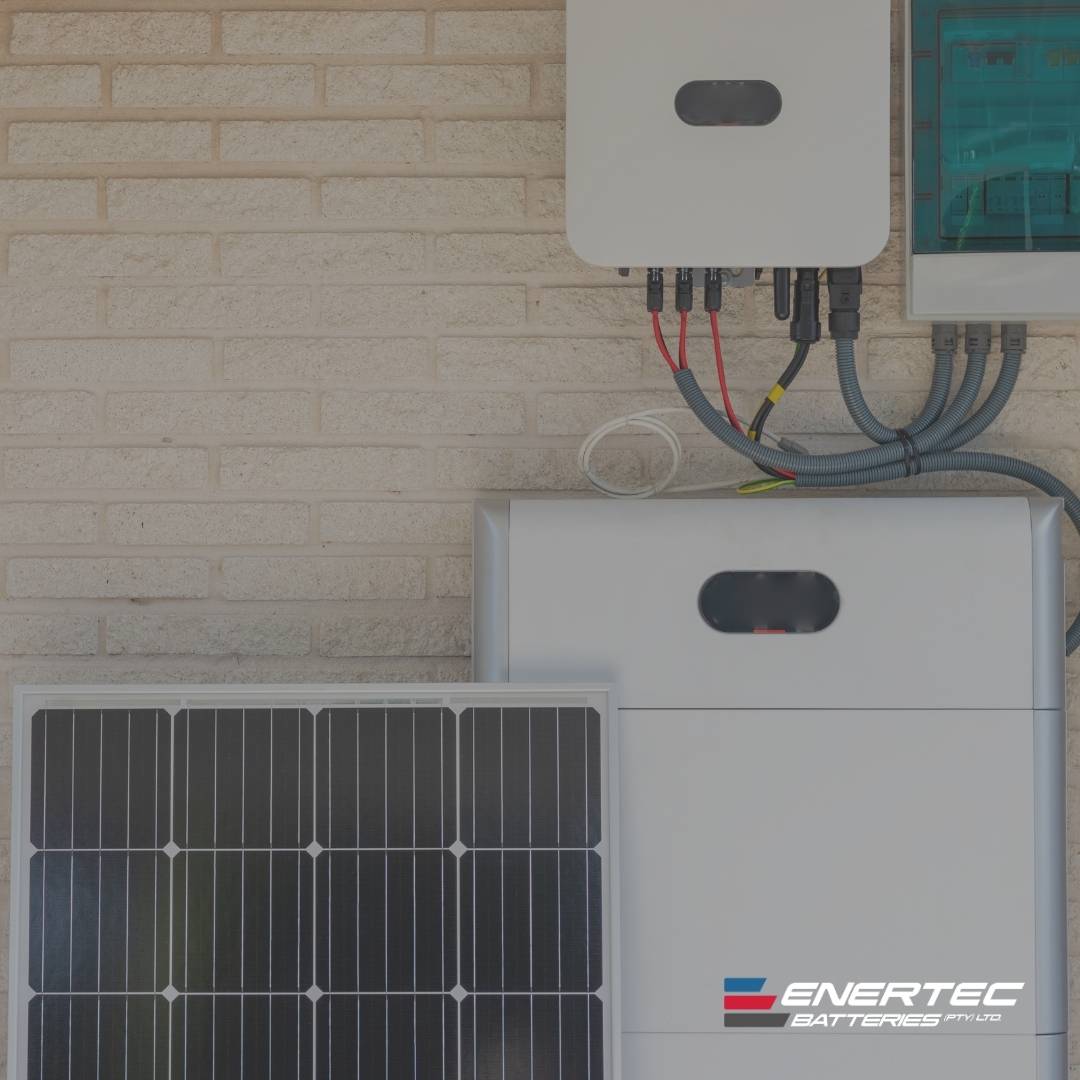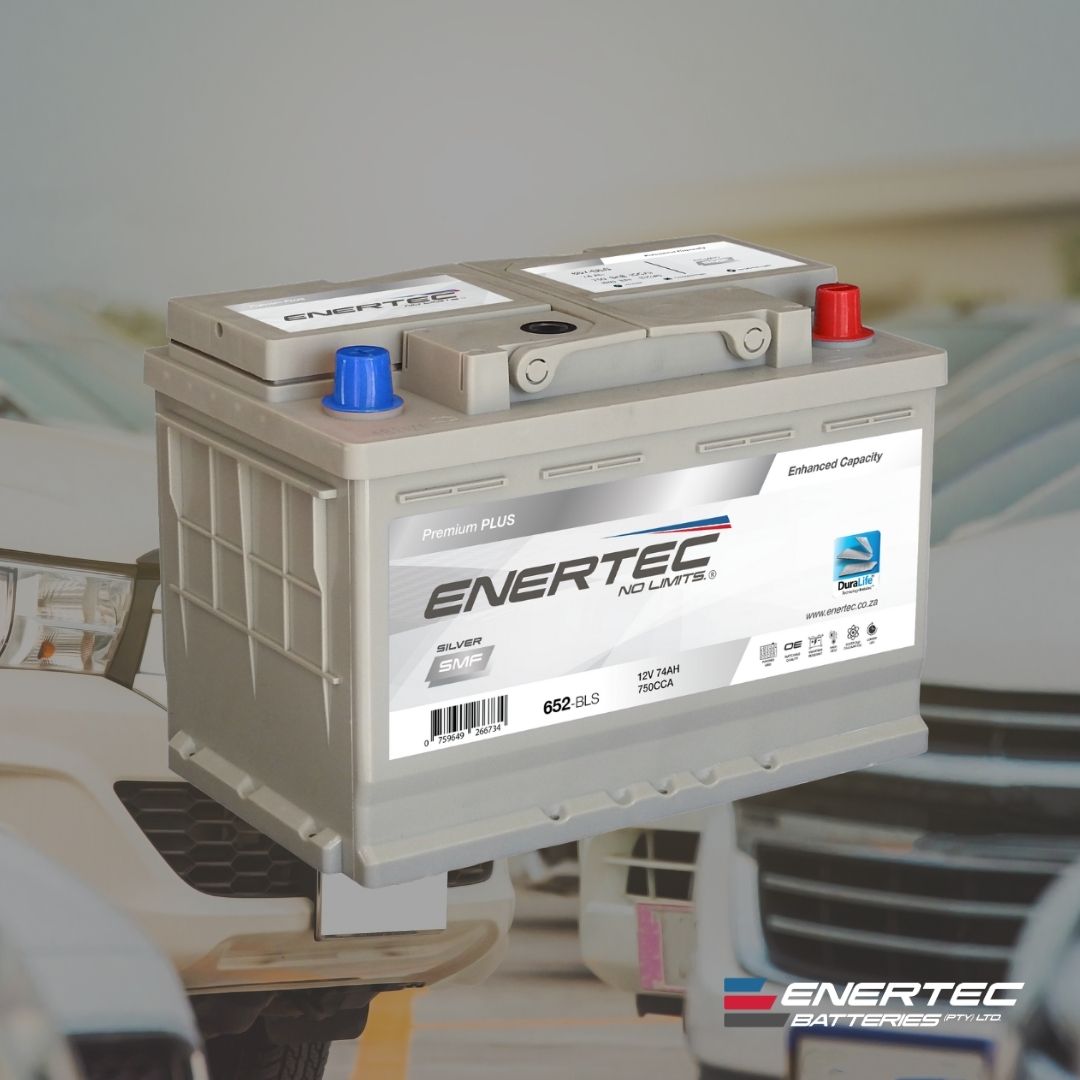2025-06-22 01:16:32
What to consider when adding Batteries to your Solar System
Understanding Battery Types for Solar Systems
One of the first decisions to make when adding batteries to your solar system is selecting the right type of battery. The two most commonly used battery technologies for solar storage are:
-
Lithium-Ion Batteries:
Lithium-ion batteries, such as Enertec’s GL Series 5.12 kWh Lithium Ion Battery, have become the industry standard due to their high energy density, long lifespan, and excellent depth of discharge (DoD). They are lightweight, require less maintenance, and can handle numerous charge cycles.
-
Lead-Acid Batteries:
These are the more traditional options, typically used in off-grid systems. While they are more affordable upfront, they have a shorter lifespan, lower energy density, and may require regular maintenance.
Key takeaway: For most residential and commercial applications, lithium-ion batteries offer better performance and longevity compared to lead-acid batteries.
Questions to consider about the addition of batteries to Solar Systems
Battery Capacity and Size
When adding a battery to your solar system, it’s essential to calculate your energy needs and choose a battery with sufficient capacity. Battery capacity is measured in kilowatt-hours (kWh) and represents the amount of energy the battery can store.
-
Assess Your Energy Consumption: Review your past energy bills to understand your daily and monthly energy usage. This will help you determine how much energy storage you need.
-
Energy Autonomy: Decide whether you want full energy autonomy (complete independence from the grid) or partial storage for backup purposes. A fully autonomous system requires larger battery capacity.
Key takeaway: The battery size should align with your energy consumption patterns and your desired level of energy independence.
Depth of Discharge (DoD)
Depth of discharge (DoD) refers to the percentage of the battery’s total capacity that can be safely used without causing long-term damage. Batteries with a higher DoD allow you to utilise more of the stored energy before needing a recharge.
For example, lithium-ion batteries generally have a DoD of 80% to 90%, making them more efficient in terms of usable energy compared to lead-acid batteries, which have a lower DoD of a maximum of 50%.
Key takeaway: Choose batteries with a higher DoD to maximise energy usage and extend the lifespan of the battery.
Battery Lifespan and Warranties
Battery lifespan is another critical consideration when selecting storage for your solar system. Battery life is typically measured in charge cycles—one complete charge and discharge cycle counts as one cycle.
-
Expected Lifespan: Lithium-ion batteries often have a lifespan of around 10 to 15 years, or thousands of cycles, while lead-acid batteries tend to last for 3 to 5 years.
-
Warranties: A good battery should come with a solid warranty. Most lithium-ion batteries come with a 10-year warranty, guaranteeing performance over the battery’s lifetime.
Key takeaway: Look for batteries that offer a long lifespan and comprehensive warranty to ensure reliability and cost-efficiency over time.
Battery Efficiency
Battery efficiency is measured by the round-trip efficiency rate, which refers to the amount of energy that can be used from the battery after accounting for losses during charging and discharging. Higher efficiency means more stored energy is available for use.
-
Lithium-ion batteries typically offer a round-trip efficiency of 90% or higher, meaning only about 10% of the energy is lost during the charging and discharging process.
-
Lead-acid batteries generally have a lower efficiency, often around 70% to 80%.
Key takeaway: Opt for a battery with high round-trip efficiency to get the most out of your stored solar energy.
Compatibility with Your Solar System
When integrating batteries into an existing solar system, ensure they are compatible with your inverter and solar panels. Not all solar inverters are designed to work with all batteries. When considering system options, ensure that your inverter and your lithium-ion battery are compatible in terms of the communication protocol. This is essential to ensure maximum efficiency of both the inverter and the battery. All modern inverters are communicated with via Wifi. The wifi/internet medium must be compatible with the solar system.
When using lead-acid batteries, the settings must be instituted accurately, as there are different charging algorithms for different lead-acid battery technologies (EG, flooded, AGM, GEL).
-
Hybrid Inverters: These inverters are designed to work with both solar panels, batteries, AC Power, and Generators, allowing you to store excess energy for later use.
-
Retrofitting Existing Systems: If you are retrofitting a battery onto an existing solar system, you may need additional components such as charge controllers or a new inverter.
-
Increasing battery capacity: Lead-acid batteries, as well as Lithium-ion batteries, are limited to a time frame in terms of adding additional batteries to a system. When batteries are connected in series for Lead-acid batteries, the entire string of batteries needs to be replaced should one battery fail or if more batteries are to be added after approximately 1 year of service. Ideally, if 12-volt lead-acid batteries are being used, they should all be charged in parallel ( equalised) for at least a 24-hour period before being connected in series. With lithium-ion batteries, should the battery capacity need to be increased, the window period from initial installation is 6 months. Failure to comply with this rule will result in the new batteries performing at the same level as the old batteries.
Key takeaway: Verify that your inverter and other system components are compatible with the battery you choose to avoid technical issues and additional costs.
Grid-Tied vs. Off-Grid Solutions
Another important consideration is whether your solar system is grid-tied or off-grid. Batteries serve different purposes depending on the system’s configuration.
-
Grid-Tied Systems: In a grid-tied system, batteries are often used for backup power or to store excess energy that can be used during peak electricity pricing periods. The solar system may be powered by the sun during daylight hours and then switch to battery / AC / generator power at night.
-
Off-Grid Systems: In an off-grid system, batteries are critical for ensuring a steady supply of electricity when solar production is low, such as at night or during cloudy days.
Key takeaway: Determine how you want your solar system to interact with the grid and what role the battery will play in ensuring energy reliability.
Cost and Return on Investment (ROI)
Adding batteries to a solar system is a significant investment, so it’s important to evaluate the total cost and the potential return on investment.
-
Initial Costs: Lithium-ion batteries typically have higher upfront costs but offer long-term savings due to their efficiency and lifespan.
-
Energy Savings: With battery storage, you can avoid peak electricity rates by using stored energy during expensive periods or during power outages.
-
Incentives: In some regions, governments and utilities offer incentives or rebates for installing solar battery systems, which can help offset the cost.
Key takeaway: While the initial cost of adding a battery may be high, long-term savings and potential incentives make it a worthwhile investment for many homeowners and businesses.
Monitoring and Maintenance
Solar batteries require monitoring to ensure they are functioning optimally and providing the desired level of energy storage. Many modern batteries come with monitoring systems that allow users to track performance, energy usage, and charge levels through mobile apps or web interfaces.
-
Maintenance Needs: Lithium-ion batteries generally require less maintenance compared to lead-acid batteries, which may need regular fluid checks and maintenance to ensure proper function.
-
Monitoring Systems: Choose a battery system that offers real-time monitoring to help you manage energy usage and detect any issues early.
Key takeaway: Invest in a battery with a good monitoring system to simplify maintenance and maximise performance.
Conclusion on adding batteries to your solar system
Adding batteries to your solar system is an excellent way to improve energy efficiency, reduce reliance on the grid, and ensure you have power during outages. By carefully considering the type of battery, capacity, compatibility, and cost, you can make an informed decision that maximises the benefits of your solar investment.
Whether you are looking for backup power or aiming for complete energy independence, the right battery will help you unlock the full potential of your solar system.
For more information on high-quality batteries for your solar system, visit Enertec Energy’s range of lithium-ion batteries, designed to deliver top-tier performance and reliability



